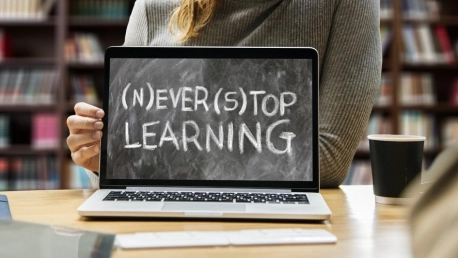There is no question that the COVID-19 pandemic has dramatically disrupted the way students in the US and abroad learn and socialize. During this healthcare crisis, children, teenagers, and young adults were forced to switch their learning habits from traditional to remote or hybrid courses, with both positive and negative effects. Truancy, mental health challenges, and higher rates of violence among students were some of the most challenging effects of the pandemic. Moreover, two-thirds of parents stated they were worried about K–12 students’ falling behind, and many struggled to find the best strategies to overcome this loss of school time.
According to the same study, two thirds of the research participants said they are at least somewhat concerned about the quality of the education received during this healthcare crisis. These concerns remained equally true across political, racial, and income groups, leading scientists to believe that American students faced numerous pressures during the COVID-19 pandemic. While some of these challenges have vanished as the healthcare crisis ended, others have had lasting effects on education. Learning recovery strategies with high chances of success are now extremely important, as they can provide students with better chances of overcoming these challenges.
Remediation, tuition, and learning acceleration can help students who are struggling with their courses by providing them with better learning opportunities in order to achieve academic success.
Why Remediation and Tutoring Are Important
According to EducationWeek, remediation and tutoring are now among the most popular approaches aimed at ensuring learning recovery. Remediation strategies actually focus on teaching the same concepts again to the students who failed to learn them the first time, while tutoring is used to give students extra help with topics they may find difficult. Both strategies make good use of the fact that teachers can quickly recognize different errors in understanding, and they can also help their students correct these errors and understand the concept or subject.
72% of the public schools that supported pandemic-related learning recovery utilized the remediation strategy, while 56% used high-dosage tutoring, a strategy that focuses on small group instruction that takes place three or more times a week. Intense tutoring strategies, like high-dosage tutoring, are not only among the most research-tested strategies in helping students improve their achievements, but they are also thought to be highly effective for most students. In fact, tutoring is so important for learning recovery that the Biden administration has recently announced the launch of the National Partnership for Student Success (NPSS), an initiative meant to provide American students with an additional 250,000 tutors and mentors over the next three years.
According to President Joe Biden, US students are approximately two to four months behind in reading and mathematics as a consequence of the COVID-19 pandemic. However, the good news is that the Biden administration is committed to supporting them.
Why Learning Acceleration Also Matters
Unlike remediation and tutoring, learning acceleration is actually a continuous instruction process where teachers use various formative practices to boost students’ access to and mastery of grade-level standards. Not only does a recent study show that students can complete twice as many grade-level lessons when they use learning acceleration, compared to using conventional remediation, but the goal of using learning acceleration seems to also extend beyond recovering the ground lost to the pandemic. In fact, learning acceleration can be seen as a long-term, comprehensive framework that unites academic, social, and behavioral strategies to promote competitiveness for all students.
According to the above-mentioned study, learning acceleration is actually more effective than remediation and tutoring in helping students recover the skills lost during the healthcare crisis. Despite the findings, however, students enrolled in majority black, Latino, or low-income schools are more likely to undergo remediation strategies, although they have similar accomplishments as their white peers who attend high-income schools. These results point to the fact that a better strategy may be needed when combining learning acceleration with more traditional strategies such as remediation and tutoring, especially in majority black, Latino, or low-income schools.
According to President Biden, students will have access to new summer learning and enrichment programs, tutoring programs, and high-quality afterschool programs. Combining these strategies with learning acceleration could help students and parents leave the effects of the COVID-19 pandemic behind them and successfully close most learning gaps.









